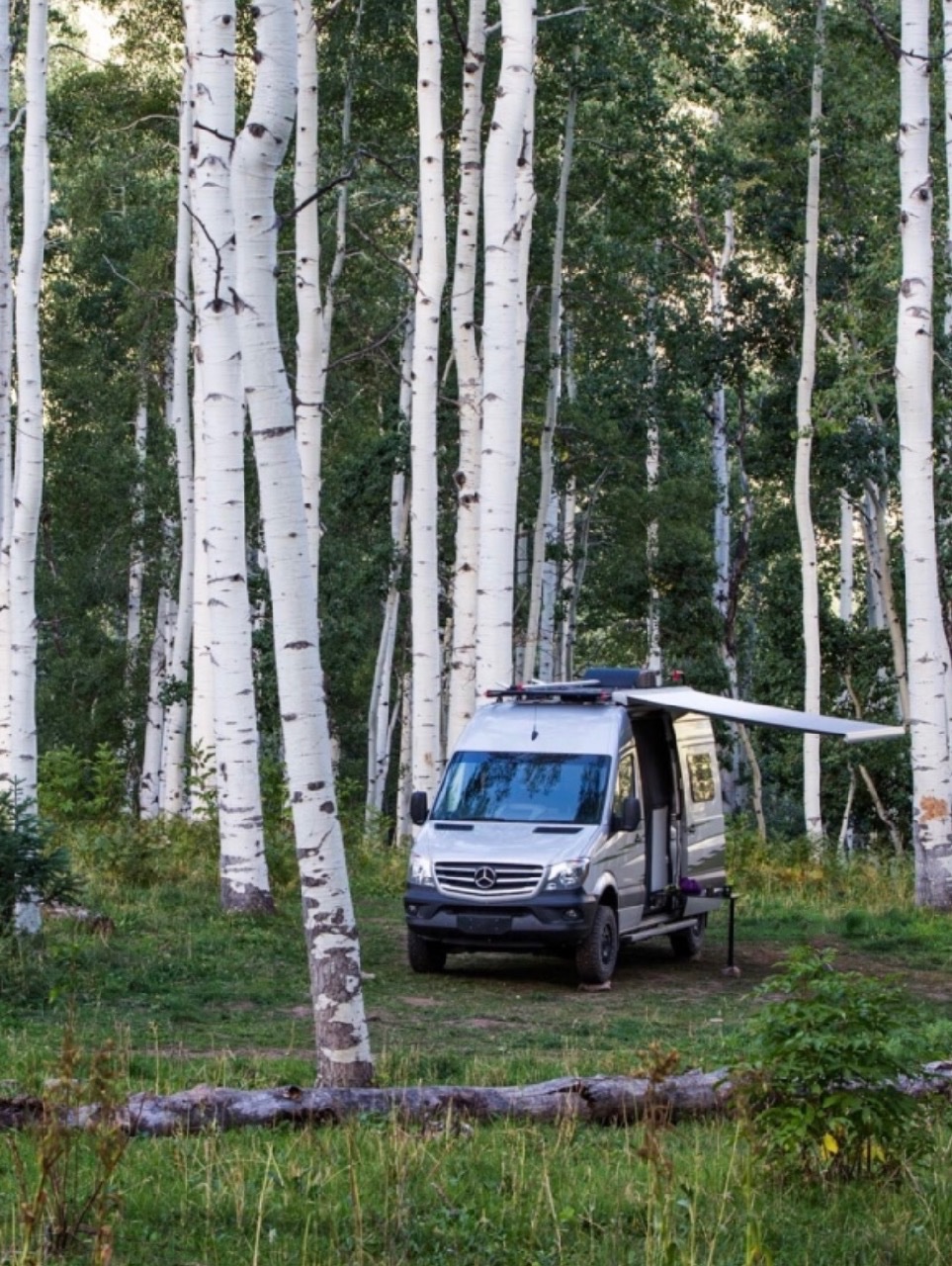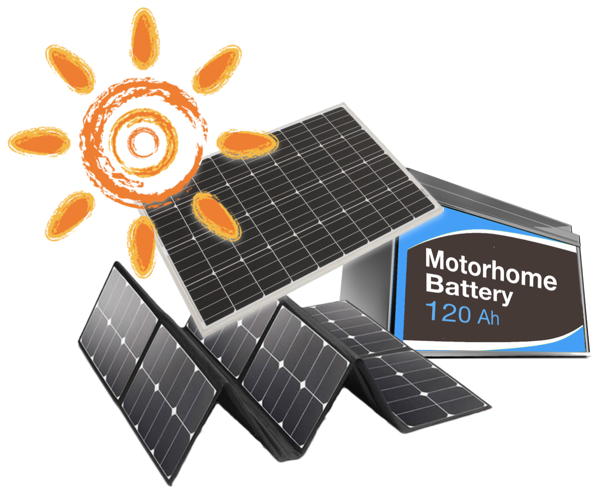Sustainability: Batteries & Solar | Water | Heating
Batteries | Consumption | Battery Recharging | Solar Charging | How Long Without Sun? | Alternate Charging Options | The Bottom Line
Based on the information in the previous pages, let’s summarise our free-camping solar-supported electrical sustainability…..
| 1: No Sun – No Battery Charging | |
 In theory: With 70Ah consumption per day, and no sun, and no other battery charging options, we have about 3 days of usable power – based on zero charging input, and usable stored battery energy of 192 Ah from our 2 x 120 Ah Lithium batteries. In theory: With 70Ah consumption per day, and no sun, and no other battery charging options, we have about 3 days of usable power – based on zero charging input, and usable stored battery energy of 192 Ah from our 2 x 120 Ah Lithium batteries.
Reality: We are unlikely to experience complete zero charging, but with no sun our battery capacity is likely to be exhausted after four nights. In these situations we would need to run the engine to charge the batteries from the alternator. Another real-world consideration – if we are on holidays and the weather is lousy, we are likely to be out driving the van anyway! |
|
| 2: With Sun – Charging from Roof-top solar panel | |
|
This will vary depending on the time of year / length of day. Reality: In summer, with long sunny days, and suitable solar panel positioning, we can maintain our 12V electricity supply for at least 10 days. Experience suggests this can be much longer in ideal summer conditions. |
|
| 3: With Sun – Roof-top solar panel + Portable solar panel | |
|
Reality: In good summer conditions, with plenty of sunshine each day, this twin panel solar setup will provide indefinite 12V power for our needs. (We will exhaust our water supply before we exhaust our 12V electricity supply. Not to mention the need to empty the toilet cassette.) We have purchased a Kings 200W portable solar blanket, advertising for which claims up to 10 amps output – adding 60 Ah energy recharge per day. Note: Real-world testing indicates the maximum output of this blanket is around 7 amps. The combined output of the 150W rooftop panel and the 200W solar blanket is around 12 amps (5 amps + 7 amps), adding 72 Ah to the battery energy storage per 6 hour day, which covers our 70 Ah daily usage. |
|
What it all means…
 The previous pages provide theoretical information about the three critical 12V sustainability factors:
The previous pages provide theoretical information about the three critical 12V sustainability factors:
-
-
- battery capacity;
- appliance energy consumption;
- solar charging capacity.
-
But what does this all mean in the real world, when we are on the road?
If travelling most of the time, and only staying in an unpowered location for a couple of consecutive nights, the energy capacity of the 2 x 120 Ah Lithium batteries being charged by the vehicle alternator while travelling, and being topped up by the roof-top 150W solar panel while stationary, will be more than adequate for our needs, with average use of the 12V fridge, lights, bathroom and water pump, and sensible use of 230V appliances through an inverter.
If staying continuously in the one unpowered location in summer, with long sunny days, and sensible use of electrical appliances, the inbuilt energy storage and recharging systems will be able to maintain the electrical energy required to run the appliances in the van for at least a full week, or longer – depending on weather conditions.
Our supplementary 200W solar blanket, used in conjunction with the roof-top panel, ensures ongoing sustainable 12V power. (We will exhaust our onboard water supply before we exhaust our 12V electricity supply.)
If staying in the one location in rainy or heavily overcast conditions for more than a couple of nights, with minimal charging and constant fridge use, 65 – 70 hours will be about the maximum length of stay before the Lithium batteries approach their critical 80% discharge limit.
In this case, supplementary charging current will be required…..
-
-
- running the vehicle engine to charge from the alternator – 40 Ah / hour;
- hooking up to a 230V power supply – 25 Ah / hour;
- if there is some sunlight, connecting the external solar panel (restoring 2 – 12 Ah per hour, combined panel capacity and sun dependent).
-
More reading:
|
Batteries | Consumption | Battery Recharging | Solar Charging | How Long Without Sun? | Alternate Charging Options | The Bottom Line

 In theory:
In theory:  In theory:
In theory: